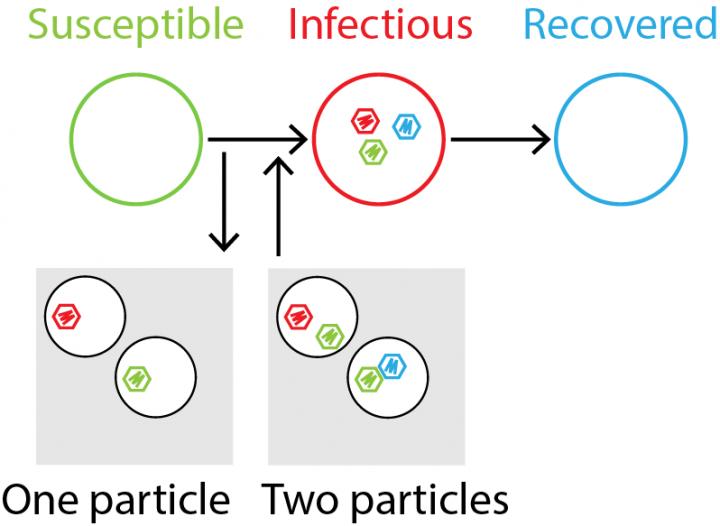
Credit: Tokyo Tech
Multipartite viruses have a strange lifestyle. Their genome is split up into different viral particles that, in principle, propagate independently. Completing the replication cycle, however, requires the full genome such that a persistent infection of a host requires the concurrent presence of all types of particles (see Fig. 1). The origin of multipartite viruses is an evolutionary puzzle. Apart from the why they can have such a costly lifestyle, the most peculiar thing about them is that almost all known multipartite viruses infect either plants or fungi–very few viral species infects animals.
So far, most theoretical research has been trying focusing on explaining how it is viable to have the genome split into different particles. This paper provides a theoretical explanation why multipartite viruses primarily infect plants.
There has been great efforts to understand the mechanisms that give multipartite viruses an advantage that can compensates for their peculiar and costly lifestyle, and this is not yet a solved problem. In addition, our understanding of why most multipartite viruses infect only plants is limited. In a recent work, published in Physical Review Letters, Petter Holme of the World Research Hub Initiative, Tokyo Tech and colleagues from China and the USA, have explained why multipartite viruses primarily infect plants. In their work, the authors formulated a minimal network-epidemiological model.
They used mathematical models and computer simulations to show that multipartite viruses colonize structured population (representing the interaction patterns among plants) with less resistance, compared to a well-mixed population (representing the interaction patterns among animals). This is thus an explanation why multipartite viruses infect plants rather than animals.
The researchers from Tokyo Tech continue to investigate the epidemiology of different types of infectious diseases by theoretical methods. At the moment, they are interested in more common disease spreading scenarios such as how influenza spreads in cities and how that could be mitigated.
###
Media Contact
Kazuhide Hasegawa
[email protected]
Original Source
https:/
Related Journal Article
http://dx.




